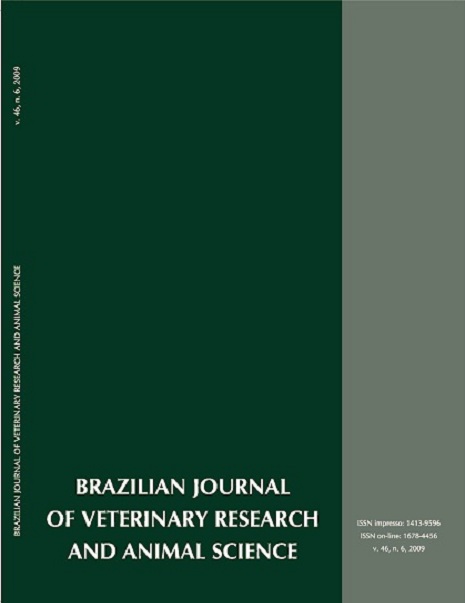Protein levels in growing and finishing pig diets
DOI:
https://doi.org/10.11606/S1413-95962009000600006Keywords:
Amino Acid, Carcass, Performance, Pig, RequirementAbstract
Gilts and barrows, in growing and finishing phases were submitted to different protein levels with or without feed grade amino acid. It was used 72 animals, 36 of each sex, with 30.73 and 30.38 kg initial average weights (growing phase) and 61.08 and 57.31 kg (finishing phase), respectively. It was adopted randomized block design with 3 treatments, 6 replications and 2 animals for experimental unit. The treatments were diets with crude protein levels: 19.40; 16.80 and 14.90% in growing phase diets and 17.8; 15.40 and 13.60% in finishing phase. In growing phase the diets with 16.80 and 14.90% of crude protein were indicated to gilts and barrows, respectively. In finishing phase the diet with 17.80% of crude protein, without additional amino acid is indicate to gilts and barrows of studied genetic if soybean meal cost is capable to assure the digestible lysine level studied and economic return. The price of soybean meal, industrial amino acids and swine will determine the viability of feed strategy in these development phases. Other factor in adoption of applied protein levels to barrows in finishing phase is pig price at slaughter, in the case of carcass classification, because the protein reduction in diet implicates in increased body fat accretion.Downloads
Download data is not yet available.
Downloads
Published
2009-12-01
Issue
Section
UNDEFINIED
License
The journal content is authorized under the Creative Commons BY-NC-SA license (summary of the license: https://
How to Cite
1.
Trindade Neto MA da, Berto DA, Albuquerque R, Schammass EA, Miguel WC. Protein levels in growing and finishing pig diets. Braz. J. Vet. Res. Anim. Sci. [Internet]. 2009 Dec. 1 [cited 2024 Apr. 18];46(6):474-83. Available from: https://www.revistas.usp.br/bjvras/article/view/26798





